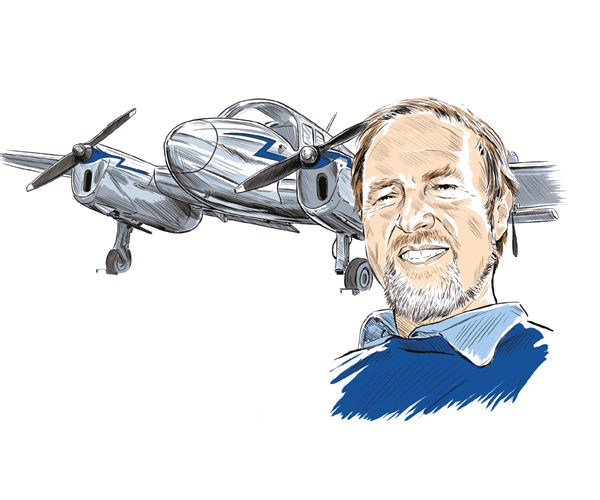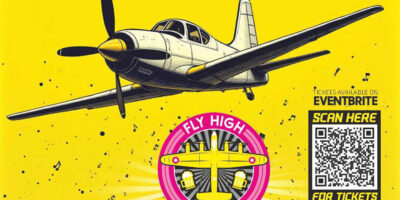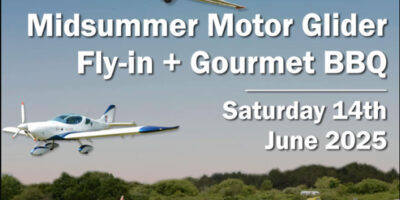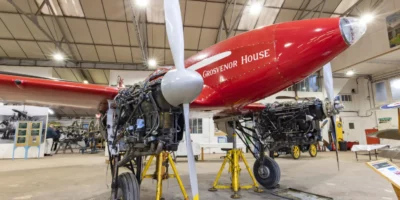Like so much of the contents of this column, it started as one of my monthly chats with Ed, the editor, who is nothing if not an enthusiast, not to mention encyclopaedic when it comes to weird and wonderful aircraft. So it was surprising to discover he didn’t realise the Miles Gemini light twin was very much a Messenger with an engine on each wing. Folklore says the motivation was corporate concern for George ‘GH’ Miles’ safety over the notoriously treacherous stretch of water between Woodley in Berkshire and Newtownards, which lies at the northern tip of Strangford Lough, 10 miles from Belfast. The Miles brothers had just taken advantage of government efforts to stimulate the post-war economy – and the grants available – to provide ‘employment for at least 300 workers, of whom 80% would be male…’. The new Miles factory was opened in July 1946 and it was immediately busy, making my Messenger towards the end of that year.
“The motivation for adding another engine seems to be mainly for safety…”
The Geminis were built at the original Woodley factory and the prototype was most likely based on a Messenger left over from RAF production. A pair of 100hp Blackburn Cirrus Minors replaced the Messenger’s 155hp Cirrus Major, and much was made of the second engine’s safety benefits in the advertising puff – there’s a well trailed picture of AIDO with one fixed-pitch propeller lying horizontal. Notable to my eyes though, is that there’s only one person in the cockpit… Maybe age has been no kinder to the smaller Cirrus than it has this pilot, but whenever I tried that, I could just about get the aircraft to hold altitude as long as I wasn’t too heavy. There’s no way I’d try it with passengers and a load of fuel.
My conversation with Ed had included twin conversions of production singles, and one of them definitely stands out. The North American Navion, with its military lines and huge sliding canopy, was built at the end of WWII by the same company that produced the Mustang, powered by a 205hp Continental six. North American made more than 1,100 of them before the Navion line was sold in 1948 to Ryan Aeronautical, which would make another 1,200 with only minor changes, but in 1951, noted aircraft modifiers Riley-Temco responded to a request from a Navion owner who wanted more safety flying over mountains…
The Twin Navion prototype was fitted with a pair of 125hp Continental sixes, then a pair of 150hp 0-320 fours and finally two 170hp Lycoming 0-340s (specially developed by Lycoming) with constant speed propellers, so it would definitely fly on one engine. There must be something about the Navion’s potential for twinning, because 340hp clearly wasn’t enough for some, and a Texas company installed a pair of 240hp Continental 0-470s in the same type to create the Camair 480 – geddit? They claimed 192mph cruise at 75%, and with that amount of grunt, so they probably should. It might have been a bit too much of a good thing though because only 30 or so were sold between 1953 and the end of the decade. I very nearly bought one in the 1990s…
There was also the Bay Super V – a pair of 180hp Lycomings on a V-tailed Beech Bonanza, an aircraft not noted for its directional stability (14 built), and the United Consultants Twin Bee, a Republic Seabee amphibian powered by a pair of 180hp Lycoming fours in place of the 215hp Franklin six (23 sold).
The motivation for adding another engine seems to be mainly for safety, although as any instructor will tell you, that’s a moot point. Nevertheless, one or two major manufacturers also had a go at converting their own singles, notably Piper who in 1962, created the Twin Comanche by fitting a pair fuel-injected 160hp Lycoming 0-320s on the single of the same name. This was followed in 1971 by the Seneca which was a development of the Cherokee Six/Saratoga, equipped initially with a pair of 200hp injected Lycomings, then a Mk2 model powered by two 210hp Continental sixes. The Piper Seminole of 1976, was the company’s final variation on the theme, essentially a T-tail Arrow powered by two fuel-injected 180hp Lycomings. Built mainly for the training market as a cheaper alternative to the Seneca, it was considerably less popular. It’s always puzzled me that Cessna never tried a similar thing – maybe because of the high wing – although they did make the wonderful 337 push-pull, which few other people seem to like.
Many years on, Austro-Chinese manufacturers Diamond’s latest DA62 is a twin-engined development of the DA50 single, and properly sleek and modern as they are, I wouldn’t buy one even if I could afford it. I’d look instead for a PA-39 Twin Comanche – the one with the contra-rotating propellers. I nearly owned a nice old 1964 ‘A’ model, in which I flew a fully laden trip from Skegness to St Nazaire via Caernarfon and back in atrocious weather, and undoubtedly the extra engine made for a better experience. Not just the security of an extra engine, but the way the aircraft rode the turbulent air. Hard to put it into words. And it went in and out of a soggy Skegness at each end with no problem. I didn’t though, which was probably the right decision. I sometimes wish I’d bought the Camair though…
Working vintage aircraft and cars make Mark particularly happy.
[email protected]







